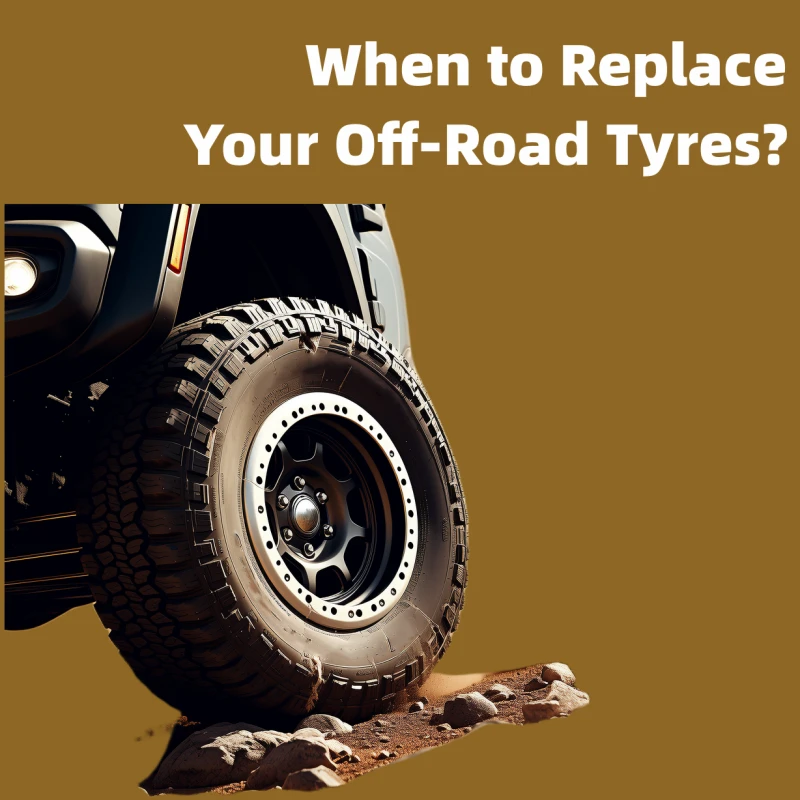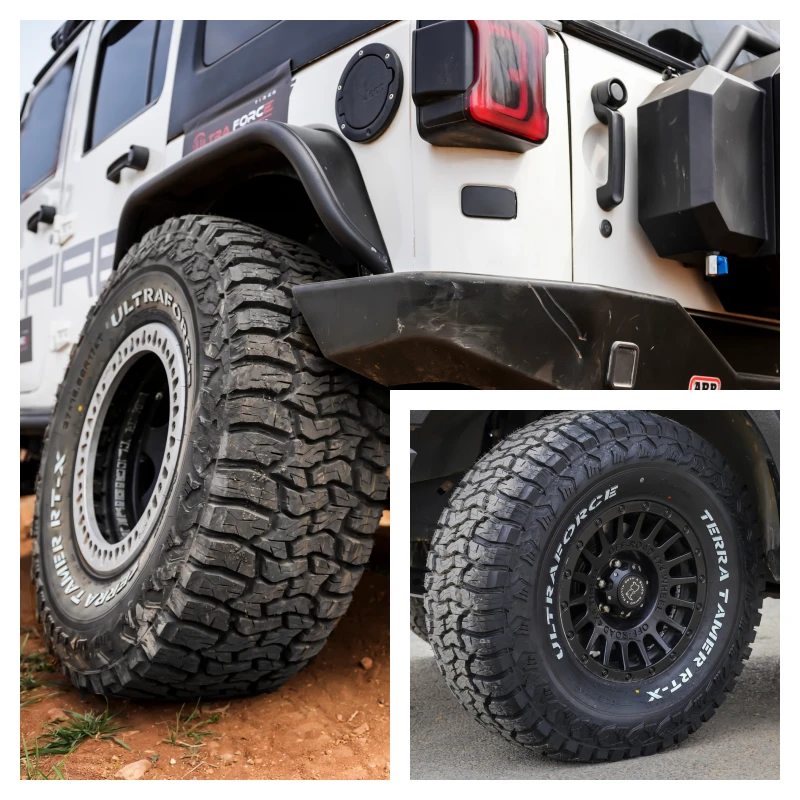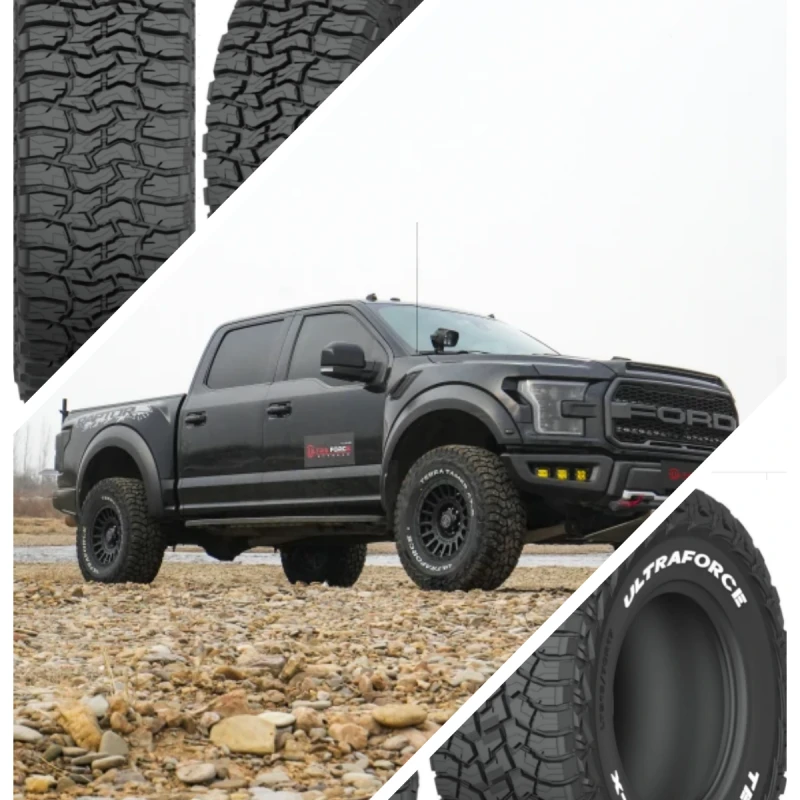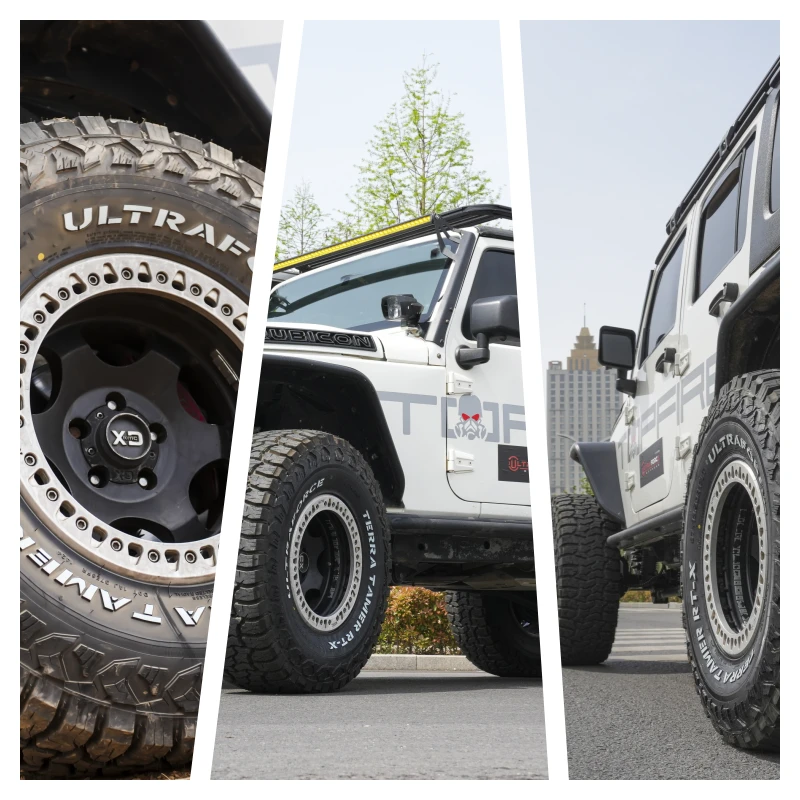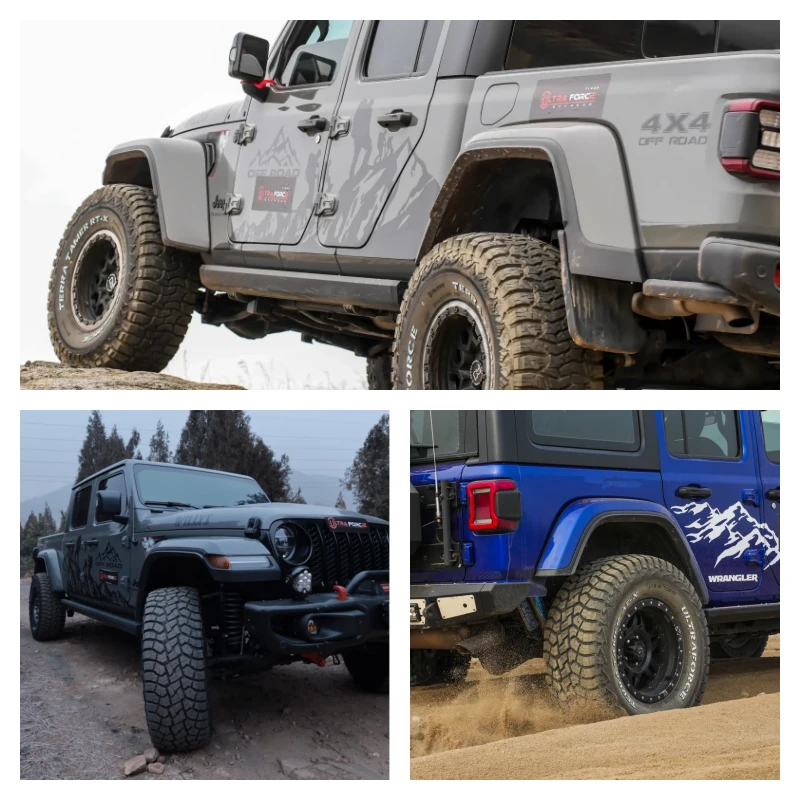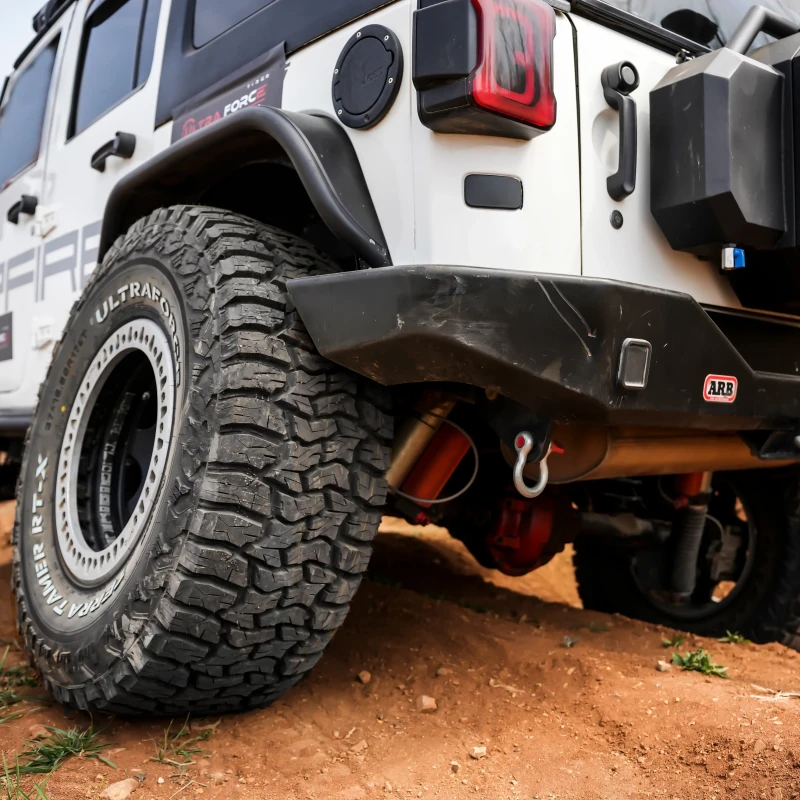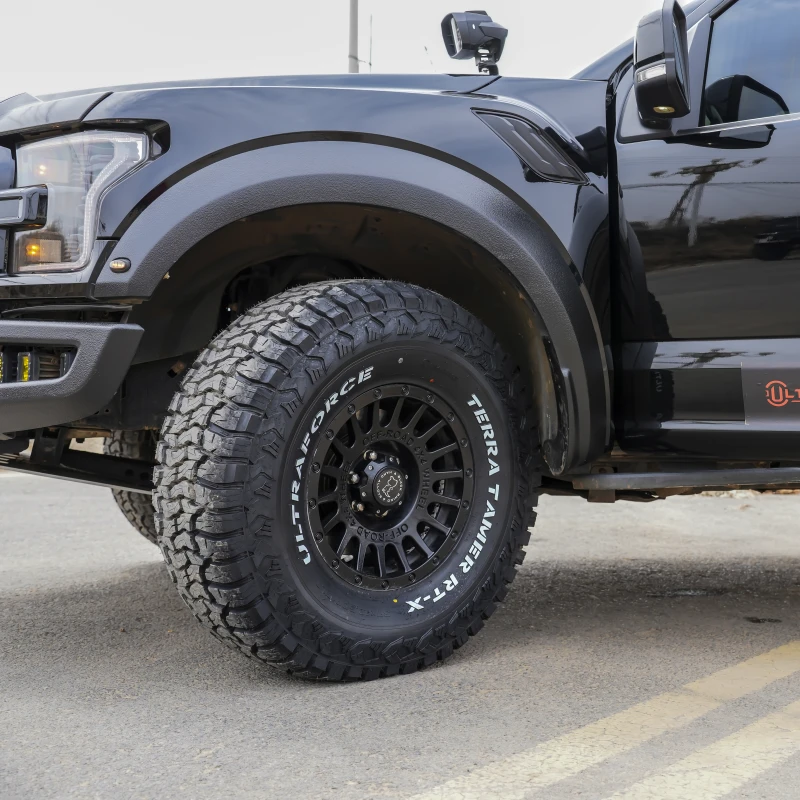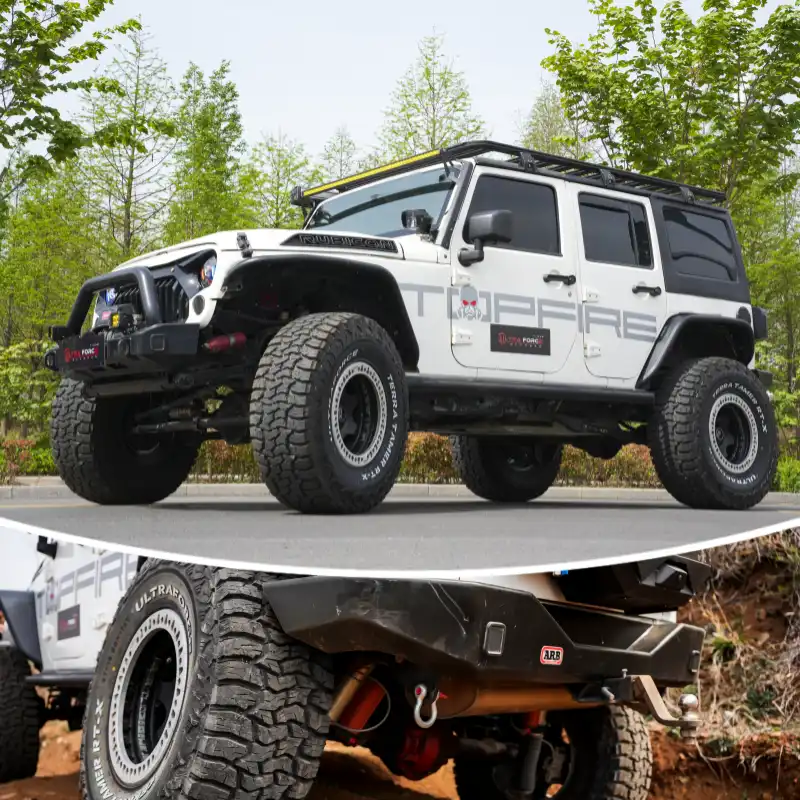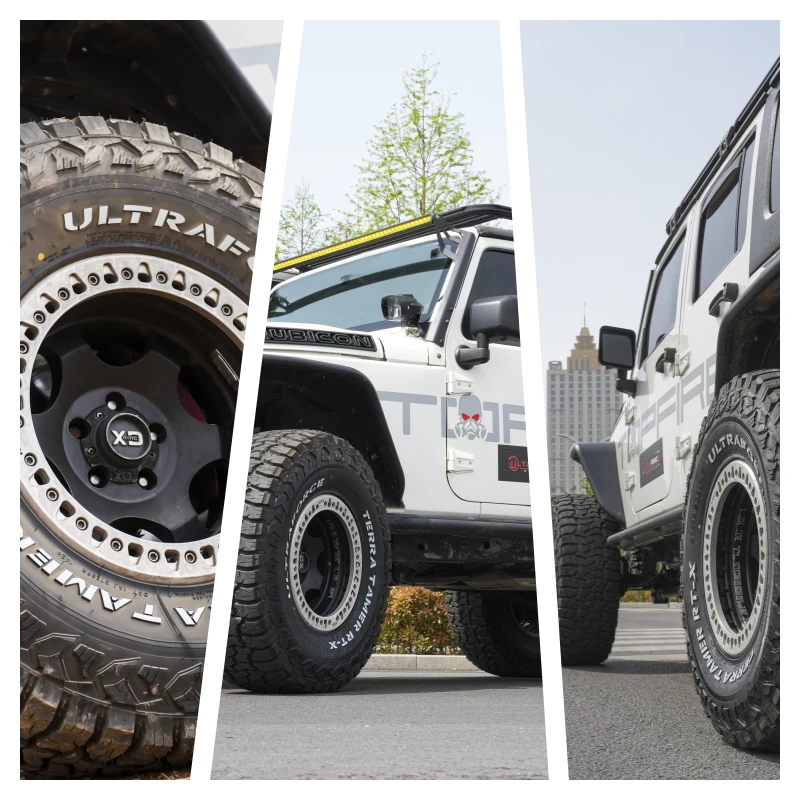Off‑road tyres are the lifeline of any adventurer who dares to stray from pavement. Yet, unlike the predictable wear patterns on highways, off‑road tyres endure a beating: rocks, sand, mud, snow… all conspiring to wear them down. Knowing when to replace them isn’t just about tread depth—it’s about safety, performance, and, frankly, avoiding that dreaded flat in the middle of nowhere.
At UltraForce Tires, we’ve spent decades navigating these terrains—from asphalt to alpine, desert dunes to soggy woodlands. We design every tread, sidewall, rubber compound, and size with one goal: to empower you (“U”) to drive with confidence, whatever the road—and boost your business with top‑tier off‑road partners.
1. Tread Depth: Your First & Most Telltale Warning
The most basic test: how deep is your tread? Tread depth dictates grip, water/mud clearance, and overall traction. It’s the one metric where numbers matter—here’s a snapshot:
Table 1 – Tread‑Depth Guidelines
| Tyre Type | New Tread Depth | Replace When ↓ |
|---|---|---|
| Typical off‑road tyre | 12–20 mm (~15 32″) | 4 mm (5⁄32″) |
| All‑terrain tyre | ~10–12 mm | 3 mm (4 32″) |
| On‑road tyre | ~8–9 mm | 2 mm (2 32″) |
Vehiclestire.com suggests replacing off‑road tyres at ≤ 4 mm (~5⁄32″).
Legal limits (on-road) often hit 2 mm, but off‑road demands more bite from the tread .
You can eyeball it with the penny test—but for off‑road use, a proper gauge is best practice. Once wear bars (tread indicators) flatten, you know the tyre has no business being anywhere other than out of service.
2. Visual & Structural Damage: Cracks, Cuts, Bulges
Off‑road conditions make tyres vulnerable to environmental assaults.
Sidewall or tread cracks & cuts signal compromised integrity—even small snags can propagate.
Bulges or blisters often come from internal layer separation—almost a guarantee of failure at speed.
Uneven wear patterns (cupping, scalloping, feathering) hint at alignment, pressure, or suspension issues.
Table 2 – Common Structural Warning Signs
| Sign | What It Means | Risk Level |
|---|---|---|
| Sidewall cracks/cuts | UV/hard impact damage | High – possible blowout |
| Bulges/blisters | Ply separation under load | Critical – replace immediately |
| Uneven wear (e.g., cupping) | Alignment or pressure issue | Medium – check & rotate |
| Dry rot (spider-web cracks) | Age + weather degradation | Medium/High over time |
Many users on r/Jeep recommend replacing tyres once cracks appear—even if tread still looks good.
3. Age: It Sneaks Up On You Quietly
Rubber degrades over time—even if tread depth remains decent.
General consensus: off‑road tyres should be replaced after ~5–7 years regardless of wear.
Age limits:
5 years if used regularly,
6 years maximum with caution,
10 years is absolute end-of-life .
It’s not just idle advice—ageing rubber stiffens, crack‑prone and brittle, losing its elasticity . You may see fine cracks or dry rot before you see tread wear, so check the DOT code (last 4 digits = week & year of manufacture).
buz
4. Performance Decline: When Feelbeats the Eye
Sometimes the tyre isn’t obviously worn—but you feel it:
Decreased traction (slides in mud/sand),
Longer braking distances,
Poor steering response,
Vibration or noise (likely uneven wear or internal damage).
If your rig suddenly feels squirrelly, that’s a clue. And remember: tyres with ≥5 mm tread won’t grip like they used to—the difference between “safe” and “oh‑snap” terrain moments.
5. Usage Patterns & Driving Style
Your adventure style massively affects tyre life.
Aggressive off‑roading—rock‑bashing, slabbing, mud‑plowing—rips tread and sidewalls faster .
Frequent highload towing, low-pressure airing down/inflating up takes its toll .
Highway miles between trails can mask uneven wear—rotating every 5–7,500 miles is vital.
Table 3 – Mileage & Lifespan Estimates
| Usage Profile | Estimated Lifespan |
|---|---|
| Casual highway + light off‑road | 40–60 k miles (≈5–6 yrs) |
| Frequent aggressive trails | 20–30 k miles (~3–5 yrs) |
| Heavy towing, low PSI cycles | < 30 k miles |
Reddit 4x4 enthusiasts call this out: mud‑terrain tires often need replacing earlier than ATs. That extra beef in the tread means extra wear—and yes, more noise and rolling resistance on pavement.
6. How to Inspect & Maintain Between Replacements
Let’s not forget: routine care extends life—and delays the need for a new set.
Pressure Checks (monthly)
Under‑inflation accelerates wear; over‑inflation reduces traction.Rotate Tires Every 5–7.5k Miles
Promotes even wear—every tyre gets time in every position .Regular Alignment Checks
Misalignment = uneven shoulder wear, cupping.Clean It After Each Trip
Mud, sand, salt—these degrade rubber and hide damage .Check Age & Dry‑Rot
Look for spider‑web cracks. Treat or retire depending on severity.Protective Rubber Treatments
Sometimes, users swear by tyre-conditioning sprays—but be cautious to use non‑harmful formulas.
7. The UltraForce Advantage
Here’s where your brand shines.
Engineered for Diverse Terrain: From sun‑baked dunes to icy slopes, UltraForce Tires offers specialized tread compounds and geometries designed to maximize traction, shedding debris intelligently and resisting cuts—even in the harshest 4×4 exploits.
Built to Last: We design for durability, optimizing sidewall thickness and rubber formulas so age and stress don’t prematurely sideline your rig.
Custom to Your Adventure: Want unique tread for desert grit? Sidewall branding for your fleet? Size configurations for oversized wheels? We do it all. Each tyre carries our “U” promise: You’re at the center of design.
Support for Dealers & Enthusiasts: We aim to help our partners grow by offering off‑road lines that complement existing passenger tyre portfolios with real business potential.
8. Decision Flowchart: Should You Replace Now?
Tread depth ≤ 4 mm?
→ Yes: Replace.Visible structural issues? (cracks, bulges, dry‑rot)
→ Yes: Replace immediately.Tyre is ≥ 6 years old?
→ Yes: Inspect carefully—potential replacement.Noticed declining performance?
→ Yes: Evaluate tread, balance, pressure.Hard off‑road use > researchers’ threshold?
→ Yes: Expect replacement every 3–5 years or ~30 k miles.
9. Why It’s a Smart Investment
Let’s be real—tyres aren’t cheap. But the cost of a blowout, loss of control, or being stranded far from help is far steeper—both financially and emotionally.
Replacing before critical failure ensures:
Safety – No slides, blow‑outs, or unpredictable vehicle behavior.
Performance – Maintains braking, steering, torque demands met.
Value retention – A well‑maintained tyre set preserves resale or part‑out value of your rig.
Final Thoughts
Off‑road tyres are hardworking beasts—but they won’t last forever. Replace them when:
Tread drops to ≤ 4 mm,
You spot structural breaks,
They’re past age limits,
Or performance flags, especially under off‑road strain.
At UltraForce Tires, we get it. We’ve pounded mud, chased rock‑faces, carved snowfields—and designed our tyre families (M/T, A/T, desert‑ready compounds, winter mixes) to cope and conquer. We don’t just sell tyres; we promise adventures, business growth, and the bold freedom you crave.
Replace responsibly, inspect frequently, and if you want a tyre partner that’s been over every kind of terrain—and innovating off‑road performance for years—reach out to UltraForce Tires. Let’s fit you with a tyre that understands your journey—and supports your brand every muddy mile of the way.
